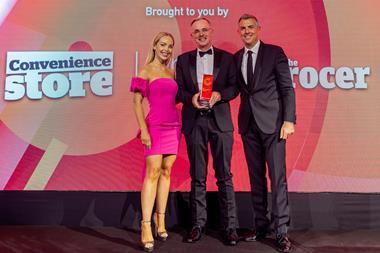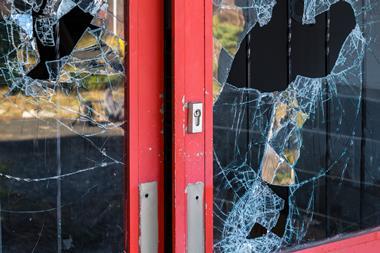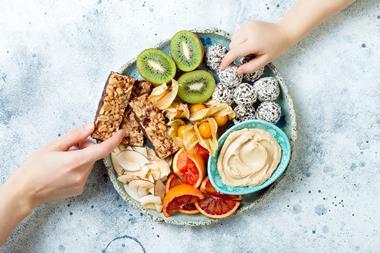While our C-Store Champions are already building their brands online, they have to learn fast to keep up with changing social media trends
Simon Biddle, Biddle’s Simply Fresh in Redditch, Worcestershire
Simon gets a helping hand from a friend who keeps his social media up to date.
Harj Dhasee, Nisa in Mickleton, Gloucestershire
Harj believes word of mouth is key when it comes to promotion and says marketing is all about personality.
Jonathan James, franchisee of 34 stores under the Select Convenience brand
Jonathan enjoys making use of a range of marketing tools provided by Conviviality Retail.
Jai Singh, MJ’s Go Local Extra, Sheffield
Jai is seen as a bit of a guru of social media by other retailers due to his huge presence on all four of the main sites
What are your methods of marketing and promotion?
Simon: We use Facebook and Twitter to show people what we have in store that day and what promotions we are running. We also send emails out to customers telling them about new promotions. We use our database of contacts which we’ve built up. We collected data when we did a healthy eating initiative and gave out free fruit to school kids; through that we asked their parents for some contact details. We also do loyalty cards and we do leaflet drops every three weeks. We drop to all 3,000 houses in the postcode. We only use email, not phone numbers, as I think sending texts is a bit more of an aggressive method.
Harj: Social media, leaflets and word of mouth. In terms of word of mouth, we make sure to spend time in the community. Rather than just giving money to local groups and charities, I like to give my time as that is the most precious thing to give up.
Jonathan: Much of our marketing activity comes through Conviviality. They provide literature and posters and so on. We have leaflets that we deliver to homes via our newspaper drop. Conviviality offers really good promotions, particularly around alcohol. Conviviality also owns Bargain Booze and that has its own app, which offers really fantastic exclusive promotions. We are about to launch a new epos system which will allow us to use the app and will be a really big benefit to us. The Bluetooth iBeacons are also a very clever bit of technology. If they have the beacon app it sends a text to anyone within a certain radius of the store to inform them of promotions. That’s very cost effective and cutting edge.
Jai: First and foremost we are currently redeveloping our website. We have found that a lot of people visit the site to find out what products we have, our services and our opening times. We make sure to keep the search engines up to date with new images and store details as well. Then we have an Instagram, Twitter, Facebook and Snapchat accounts.
Which marketing method do you find are the most effective?
Simon: The emails are effective. A lot of people do come in and say ‘We’ve had the email about your promotion’ so we do get feedback on them, which is nice. On social media we know we are reaching a lot of people because we’ve got 600-700 likes on Facebook and probably the same on Twitter. Those sites are useful for just letting people know when we are open, especially on days that other stores are closed. It reminds people that we are there.
Harj: Word of mouth is absolutely the most effective. Everything is made on word of mouth. If people say you are good, it brings people in. We have people come into the store all the time and say they have been told we are good.
Jonathan: I think the Bargain Booze app is one of the most innovative means of promotion. That and the iBeacon show that the store is modern and up-to-date, which will interest younger shoppers. Until then, leaflets work well for us because we get them in front of people in the local area and I’m confident that the promotions on those are good enough to catch the eye of the residents even when loads of leaflets fall out of their paper.
Jai: We find social media the most cost effective because it’s free! It just costs time.
How do you measure the effectiveness of the different activities?
Simon: For each of our posts on Facebook it tells us how many people have viewed it. We get some replies to our posts and people ask if we have certain items in stock and we reply to let them know. We also do charity work which goes on Facebook and Twitter as people like to see us doing work locally.
Harj: Facebook is easy to measure because it gives information like post views. It’s all about the community feel and being the centre point of the village. It’s important to always be available to chat to customers and have information available if they want to ask about community events or activities.
Jonathan: We just know from what people tell us and what we see in store. People come in with the leaflets and we see promotional items selling well after a leaflet drop.
Jai: With the website and social media sites you can see the number of ‘impressions’ (visits) you’ve had, where on the page people are clicking, and where they’ve come from. With the website we had about 30 hits a day which is pretty impressive when you think how that adds up. There’s a ‘pay per click’ service you can sign up to via Google, which will allow you to earn a bit of money every time someone clicks on an advert on your site.
Have you tried any methods which you considered not to be cost effective?
Simon: I used to have a private firm deliver leaflets for us, but I found people were moaning they didn’t get the leaflets. I found it more reliable to have Royal Mail do it. I noticed the difference in sales by changing over to them so it’s worth it for the sake of about £30 more. It pays to go with a reputable company you can trust.
Harj: Leaflet drops are old-fashioned and expensive, and the return on them isn’t great. I do leaflets drops three to four times a year and although we may see an increase in sales as people come in to buy the promotion they’ve seen advertised, it doesn’t encourage loyalty. Even worse is local newspaper advertising. They have never added value for us.
Jonathan: Not since I’ve owned Conviviality stores. We’ve always been very selective and opted for an in/out approach so we are not just spending money on trying to make as much noise as possible.
Jai: The iBeacon only cost about £80 to set up so it wasn’t much, but we also did the Bluetooth marketing where people within a half-mile radius could be sent images, texts and promotions via Bluetooth. It was effective for a while, but it’s become less useful as technology has become more advanced – people’s phones are blocking certain Bluetooth users and people are using wi-fi more.
How do your staff help to market the store?
Simon: If we have special offers on the staff will tell customers and put leaflets into carrier bags. They are happy to do it without being asked.
Harj: With word of mouth. They speak positively about the store and tell their friends and family about what the store has to offer.
Jonathan: The staff get involved in handing out leaflets in store and speaking to customers to get their feedback.
Jai: They like to get involved. I like to catch them off guard and post funny photos and videos and tag them.
How do you get inspiration for marketing activities?
Simon: I do look at other social media sites and other retailers’ sites to see what they are doing to give me ideas. Mostly, though, it’s just ideas and promotions which come into my head, and the staff will think of ideas, too.
Harj: I always watch what other retailers are doing on their social media sites, but you have to do what works for you. Singh’s Premier is amazing at social media. Mandeep does lots of competitions, encourages people to like and share posts and the page to be in with winning prizes. He has a massive presence on Facebook.
Jonathan: I’m a big supporter of the Association of Convenience Stores and through that I am constantly meeting other retailers, sharing ideas and finding out about what works for them. Every six weeks Conviviality franchisees get together to share best ideas. My team goes to all those meetings.
Jai: I like to help other retailers set up social media pages. Any new ideas and techniques they find they will share with me and we will help each other in that way.
Do you feel confident in your marketing knowledge, or would you like to know more?
Simon: My friend who helps with my marketing is pretty good. He does marketing for many other businesses so I’m confident in his knowledge. I’m always willing to learn from others and happy to take advice. It’s important to know your customers and their habits and I’m confident about that. I’ve been in the area for a long time.
Harj: I’m always happy to learn more and see what there is out there. I’m confident in what I do, but if there’s a channel I’m not exploiting I definitely want to exploit that.
Jonathan: I would like to think my team is very good at getting the message across at store level. I think as an industry there’s a big opportunity around social media, and large companies, suppliers, wholesalers and so on with their big marketing budgets are well placed to help our industry to come up with a starter pack to explain what works best on social media.
Jai: If I had the time to learn it I would like to learn coding. I know a bit, enough to create a basic website, but I would like to have a bit more knowledge of the subject.
What would be your advice to other retailers who want to promote their store more?
Simon: Definitely use social media and like other local groups’ and suppliers’ pages. Integrate with the community through those sites. It’s a great way to build connections.
Harj: Don’t just promote promotions, promote yourself. Show that you are a person and you have something the multiples don’t have – a personality. If you have a personal Facebook page, either keep it unaffiliated to your store’s page or make sure you are very careful not to give yourself any bad press through it. It’s easy to give a strong opinion or make a comment that others disagree with and you don’t want that to affect your business.
Jonathan: Make the most of opportunities, but don’t do so much that it becomes white noise. Be selective in your approach so you don’t bombard people.
Jai: Show your personality, embrace the opportunities, and learn from others. There’s no right or wrong, but try to keep your personal feelings away from it. We try to reply to all posts as a brand rather than as individuals in order to remain professional.
How important do you think it is to use social media?
Simon: It’s very important. A lot of people use it now, even the older generations. It’s a growing market and it’s free as well! A friend of mine does marketing for me and he set up Facebook and Twitter for me as a favour. He has a girl work for him who does posts for me. I send her photos and she uploads them. I pay them a small amount a month, but it’s nothing major. It costs more to put one ad in the local paper.
Harj: It’s exceptionally important; it’s the new marketing tool. You have a large audience you can interact with and show your personality to.
Jonathan: I would say it’s vital. But it is important to make sure you don’t fill people’s newsfeeds with drivel. You don’t want them to get fed up with you or they’ll unfollow you.
Jai: It’s hugely important. Twitter is useful for connecting with suppliers. Facebook is used by a wide variety of people. Snapchat is used by the younger shoppers and is more interactive because you have to open a post to see it, rather than just scrolling past it. Instagram tends to be used by people who are only interested in photos so I like to be on there to cover all bases.
How frequently do you post about your store?
Simon: We use Facebook about once a day. We don’t do much because I think you can overdo it. We just like to give an update on offers and food cooked in store that day, or what seasonal veg is in.
Harj: At least three times a week. We have Facebook for customer interaction and Twitter for supplier networking. I don’t put promotions on Facebook; we do a weekly storyboard of stuff we have in and what I’ve been cooking. We have two Facebook pages, one for the store and one called the ‘Mickleton shopkeeper’ which is a normal profile as opposed to a business profile, which means we can make friends, message people and interact a lot more.
Jonathan: We use Twitter and Facebook and a website is being designed which will link to those sites. But my 15-year-old son and 16-year-old daughter say Facebook and Twitter are “so 90s” and use Snapchat and Instagram. I want to explore those.
Jai: About five times a day. I use a piece of software which links all three sites, excluding Snapchat, so I only have to post once. I try to make the Facebook site like a digital noticeboard with local news and info. I use a ‘page’ rather than a ‘group’ because with a page you can invite people to like it and get better analytics.
The C-Store Champions are a group of experienced retailers who understand the role of the local store in their community. They are tuned into the demands and desires of their customers and believe in continual development of their businesses. Each month the Champions share their expertise
Source
cc
















![C-Store_Champions_logo-CHOSEN[1] 2023](https://d2dyh47stel7w4.cloudfront.net/Pictures/380x253/6/5/7/301657_cstore_champions_logochosen12023_817064.jpg)




No comments yet